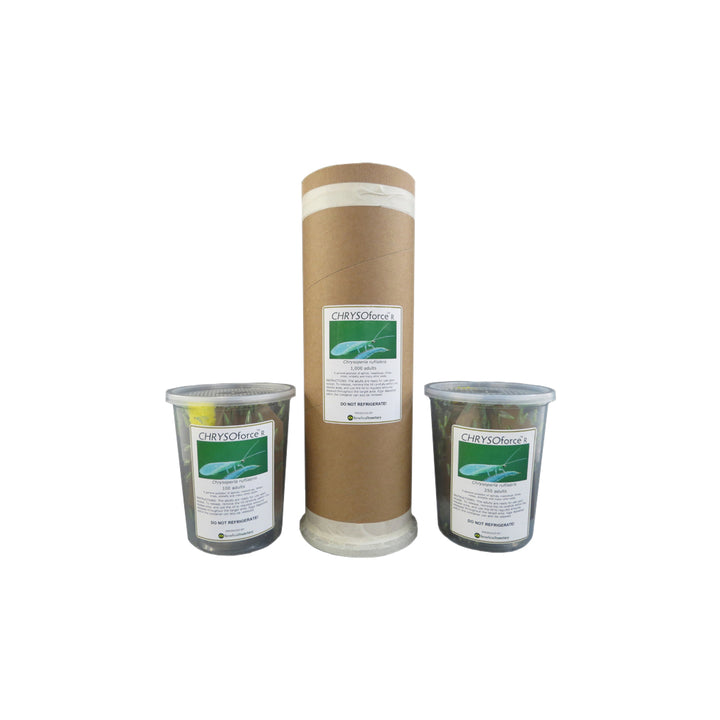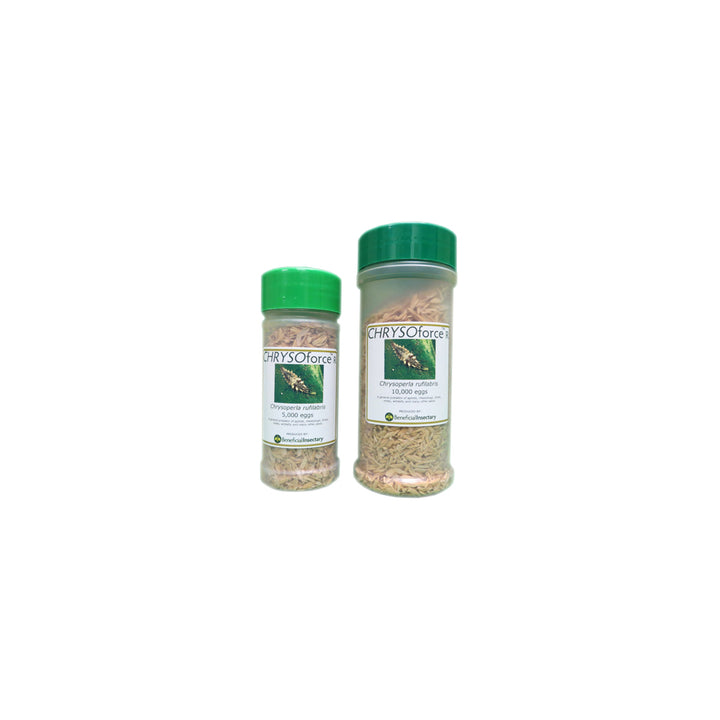No reviews
$99.00
Regular price
/
- In stock - departs in 1-2 business days w/ overnight shipping as weather permits
- Inventory on the way
Works with
No reviews
Chrysoperla rufilabris is a species of green lacewing whose larvae are aggressive predators. They are primarily used for aphid and, to an extent, mealybug control, but will also feed on other soft-bodied arthropod pests including whiteflies (eggs and immature stages), some species of scale insects, and a few species of pest mites. Adults are not predatory, and only feed on nectar or pollen. However, C. rufilabris are available as eggs, larvae, or adults. Which life-stage you choose is dependent on pest level, timing, and environment. Eggs are useful as aphid prevention on highly susceptible plants, or if pest levels are still low. The major advantage of using the eggs is they are more affordable than the larvae. The larvae are excellent for a quick knockdown of aphids or other suitable pest outbreaks. The adults are mainly utilized for tree production, since they will fly to the foliage where they lay their eggs. One of the best benefits of using lacewings is that they are not picky about what aphid species they eat (unlike Aphidius spp. and other parasitoids). If you are unsure of the aphid species, or have multiple species in the same facility, lacewings are a great option. Even if you know precisely which species of aphid you have, for outbreaks or hotspots, lacewings are always a great choice, in combination with Aphidius spp. or other parasitoid wasps.
Adult green lacewings are around 2 cm long and resemble moths when in flight. Females will actively seek out aphid colonies so they can lay their eggs among them. Eggs are attached to hair-like stalks that hang down below the leaves (if theyre laid on the underside, which they usually are). The tiny larvae that hatch out will immediately begin consuming aphids or other pests (or each other if there are no pests present). They can eat around 100 aphids or more in their lifetime. Depending on temperature, larvae will live anywhere between two to three weeks before pupating. The pupal stage lasts roughly five days, and adults can live four to six weeks. Optimal conditions for the larvae are 6789°F with a relative humidity of 30% or greater. These are the optimal conditions, so a few degrees off either way will not have a big impact on them.
Due to this product being a live good, we do not accept returns on this item.





